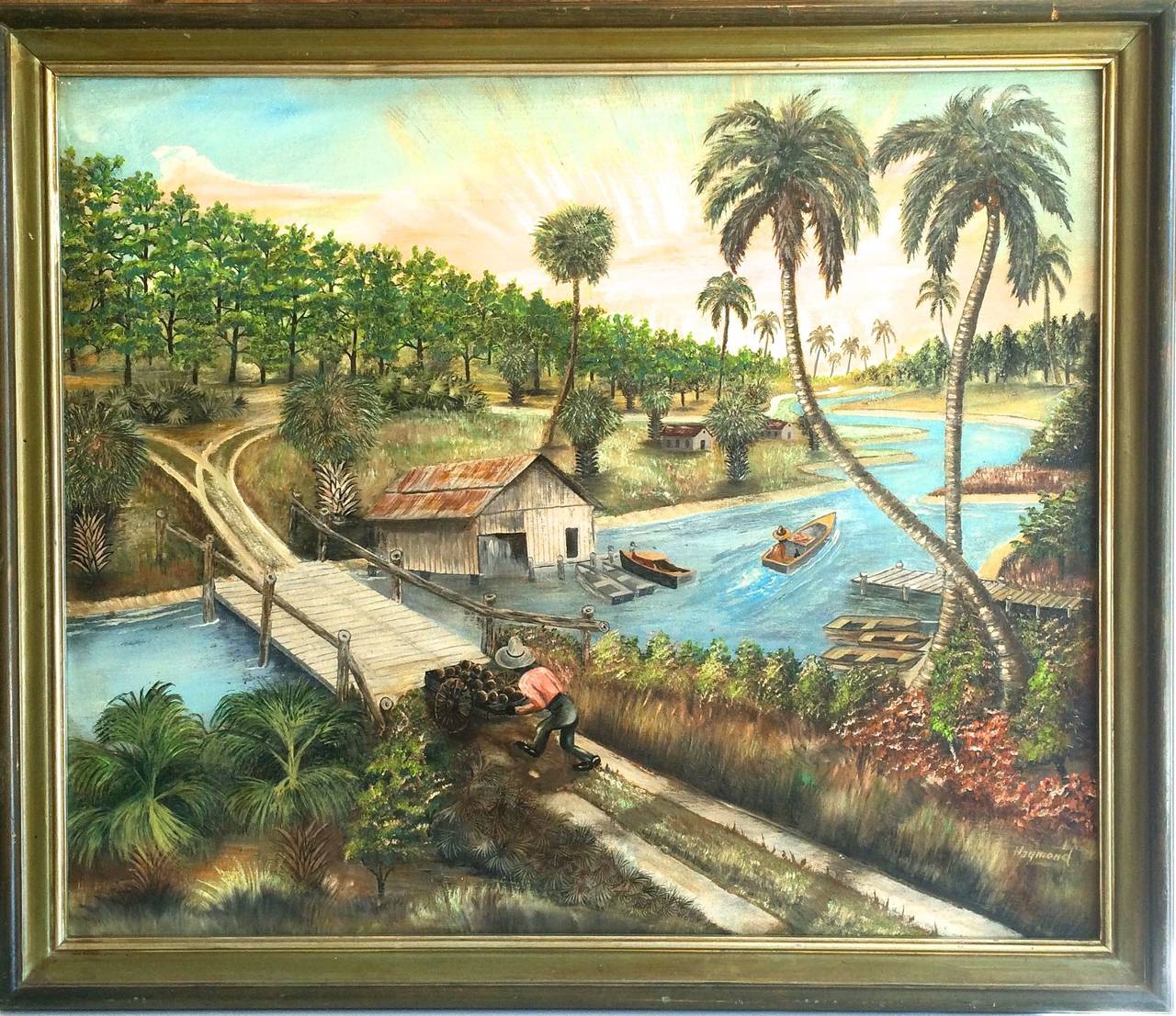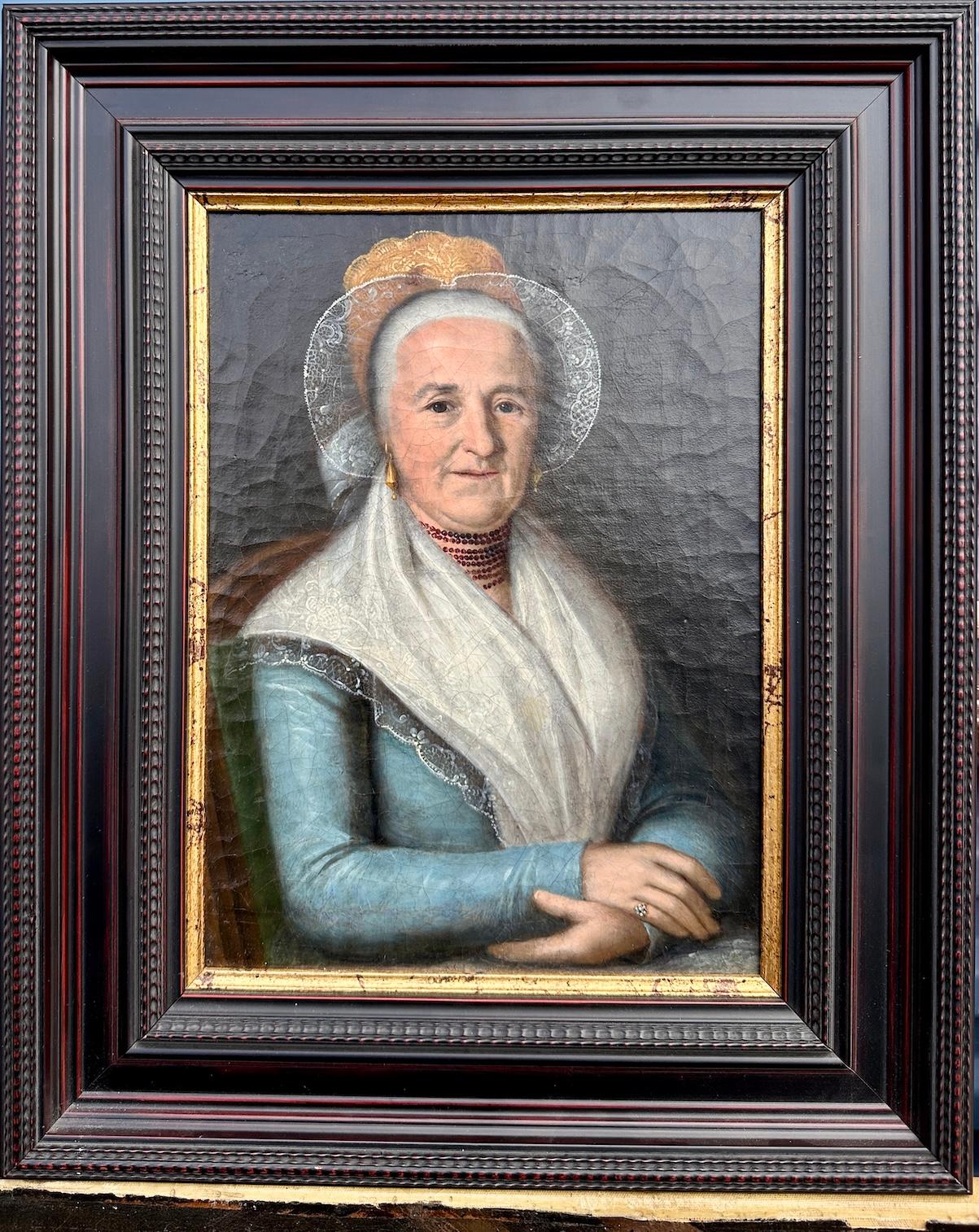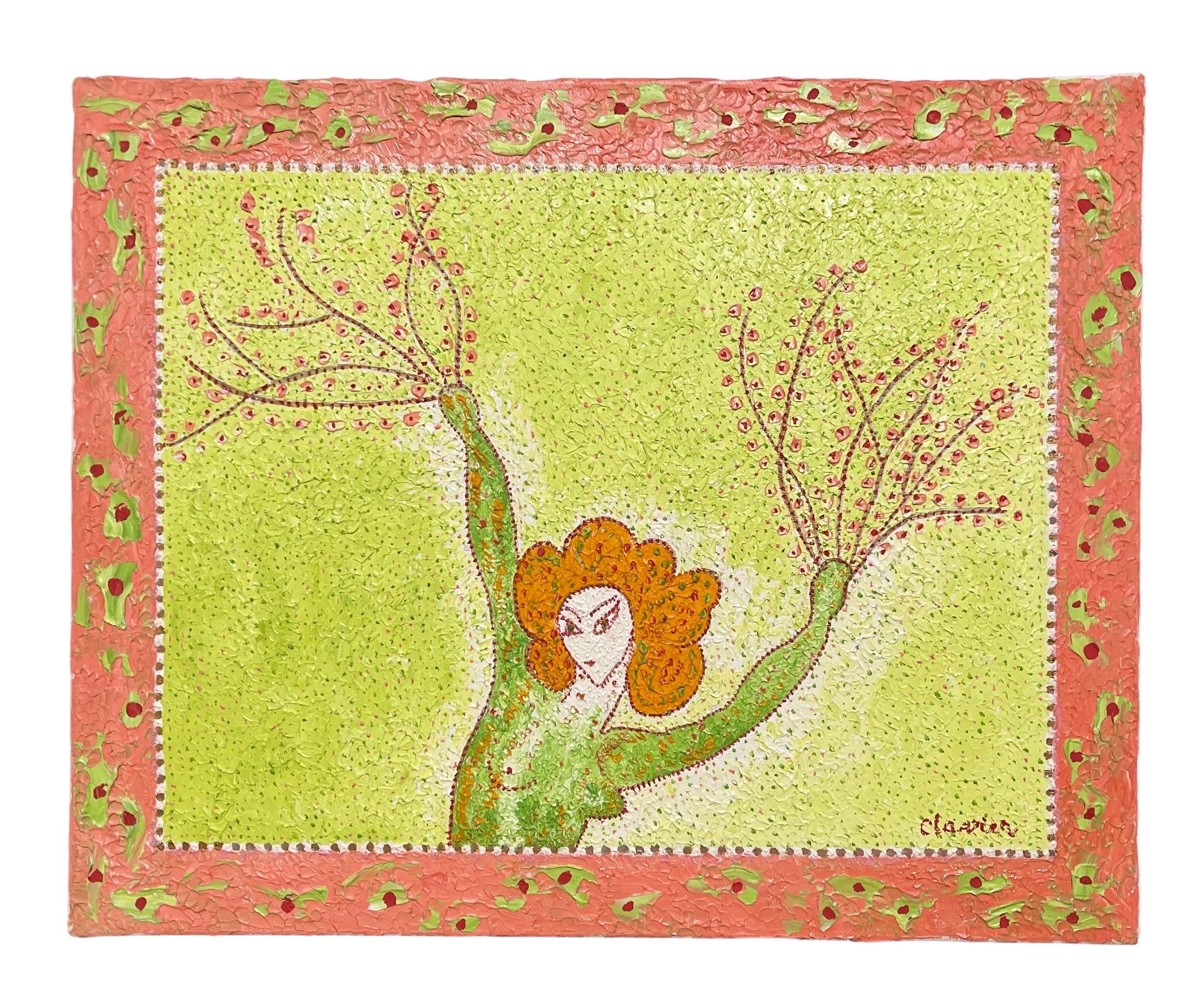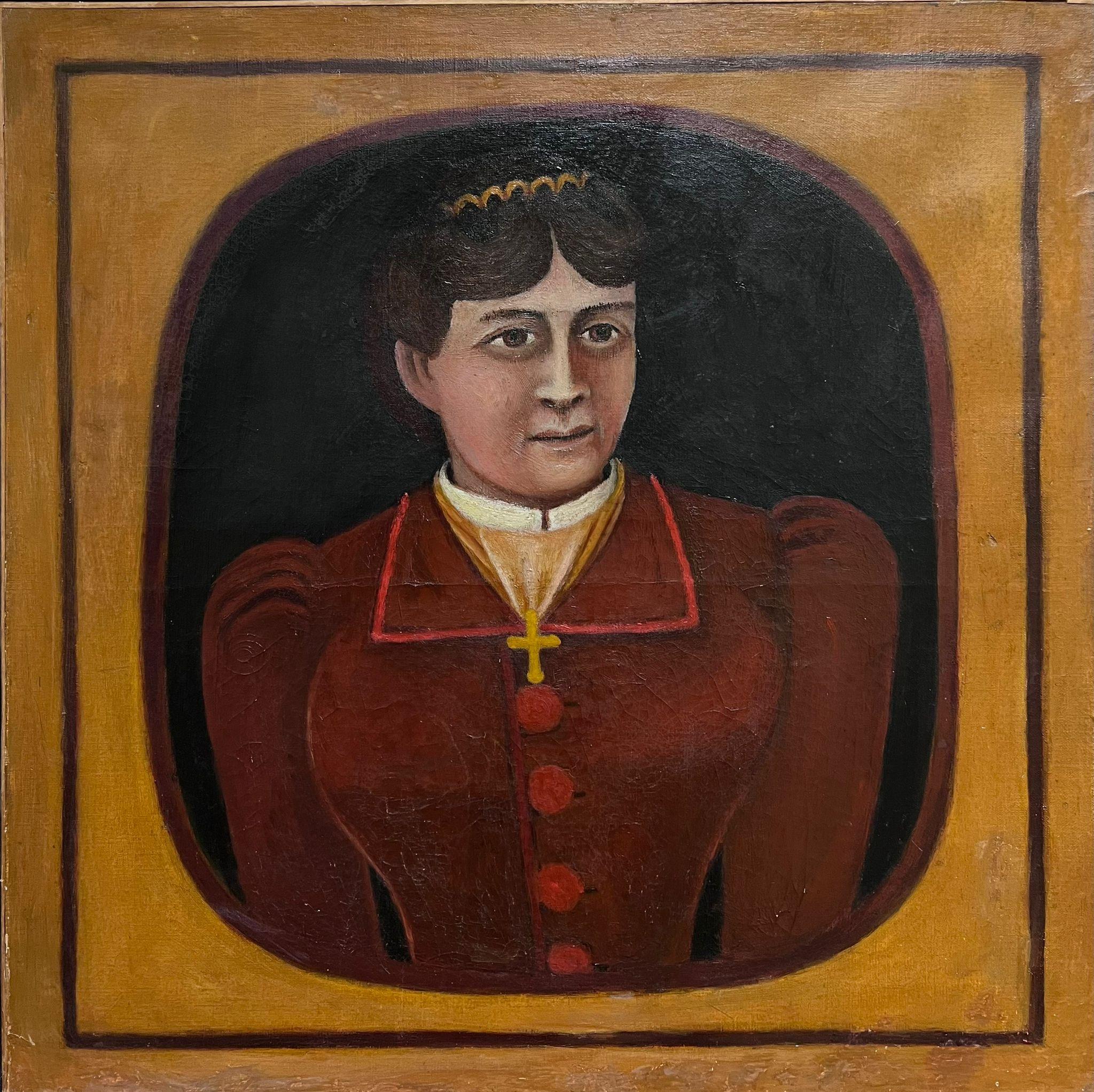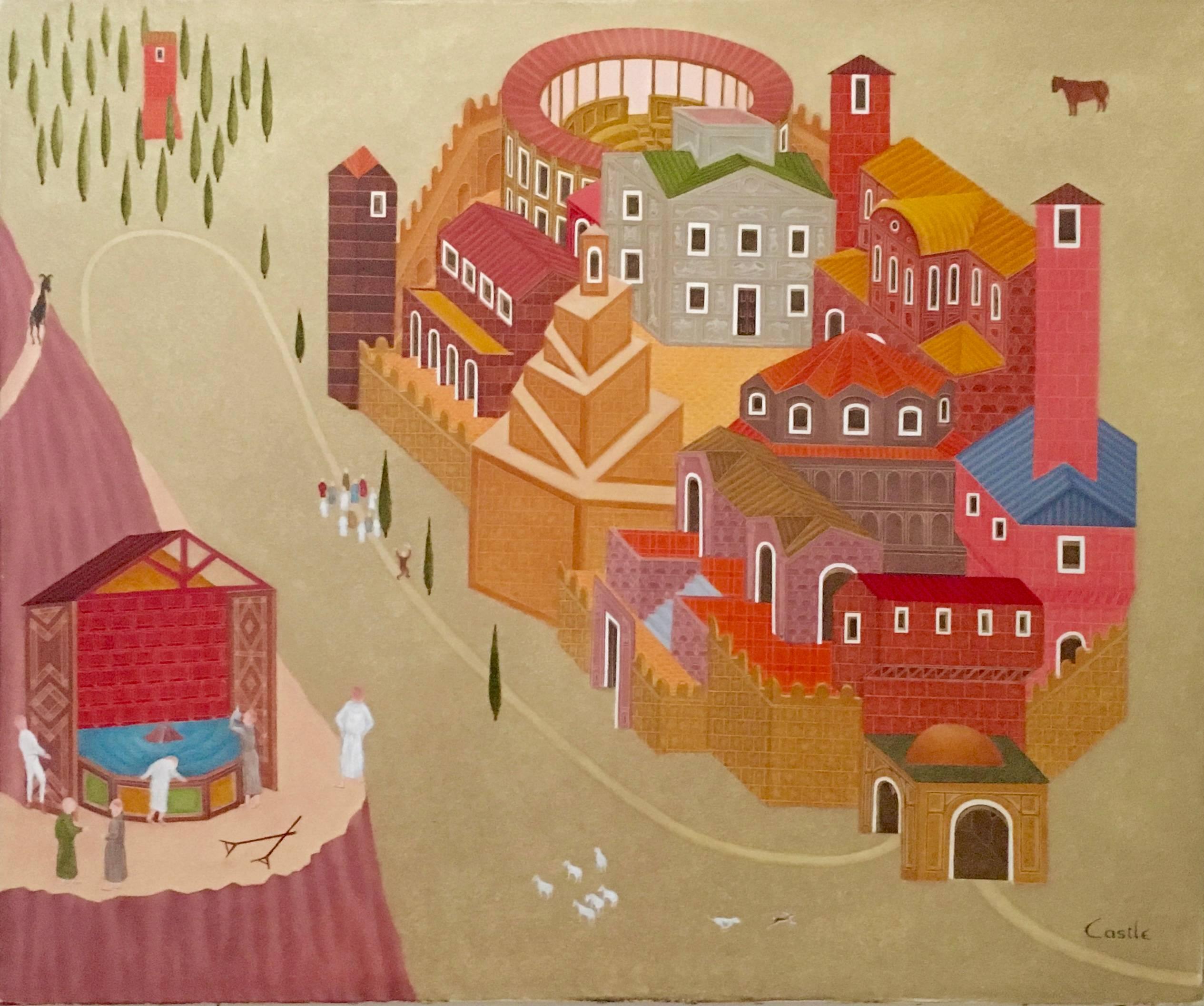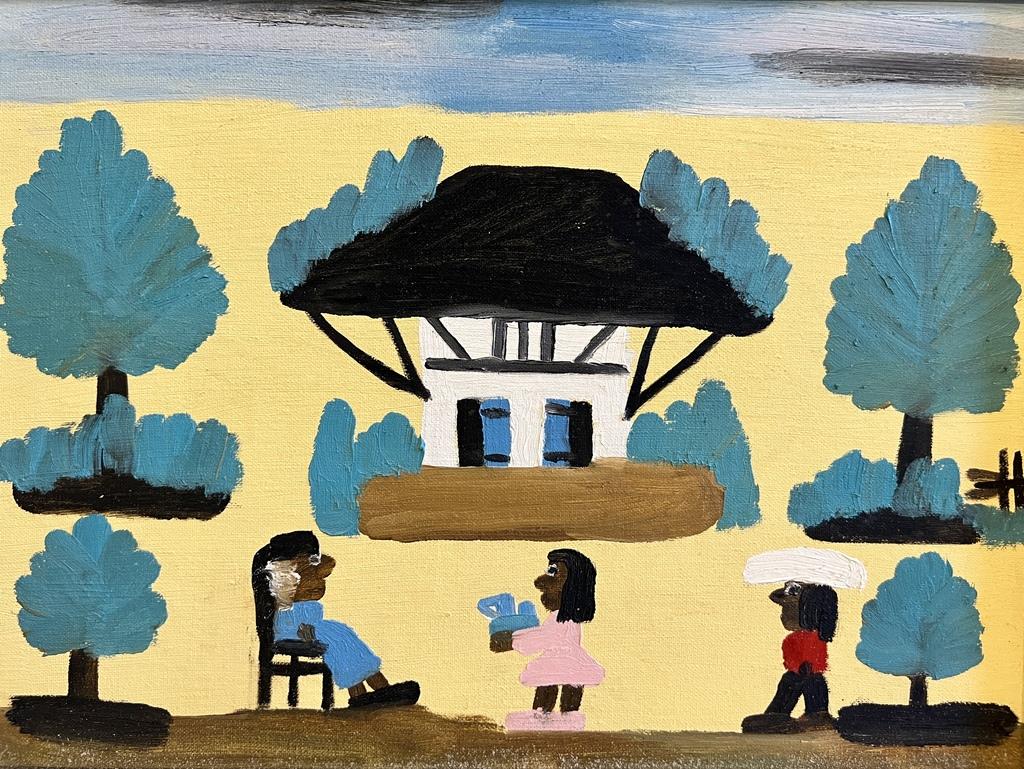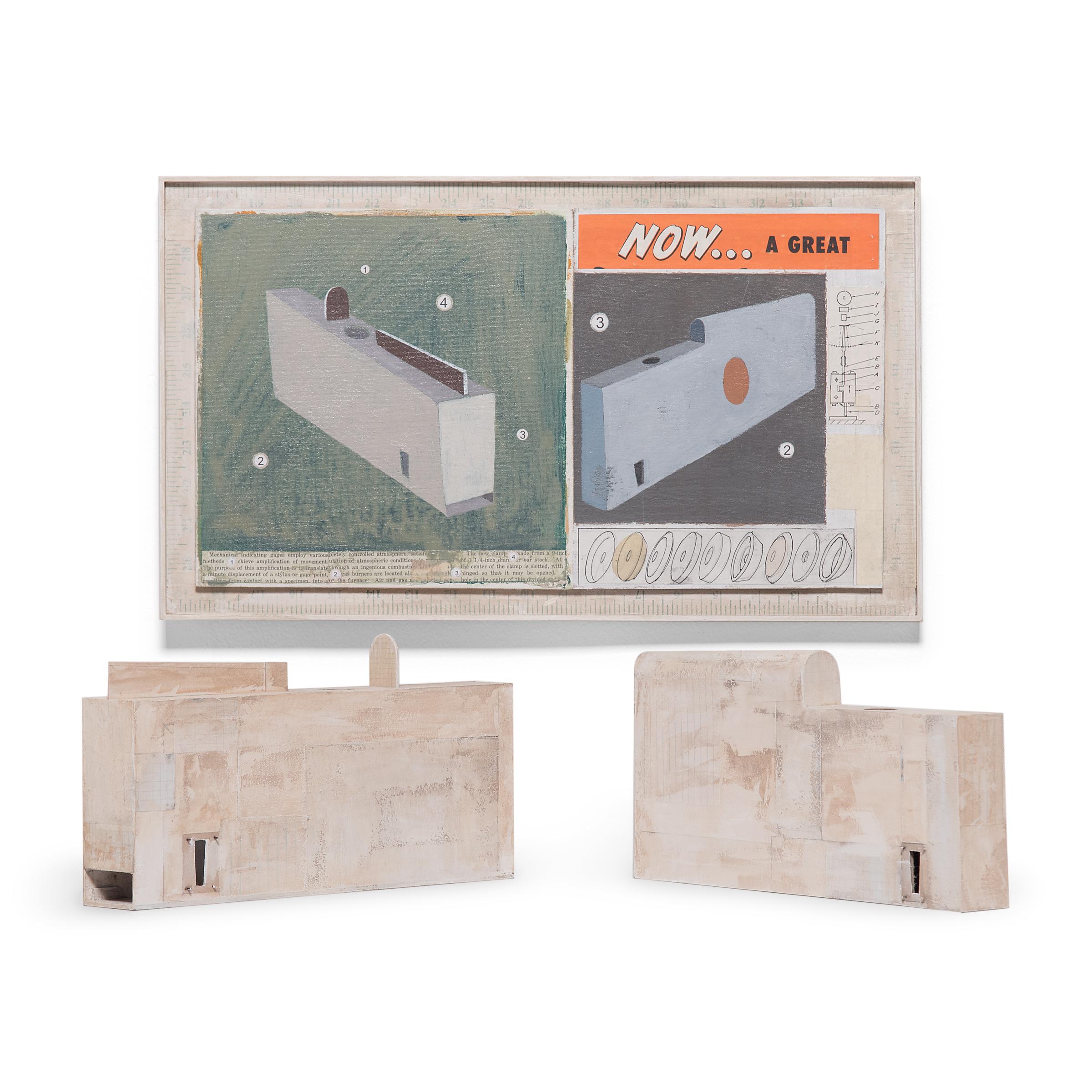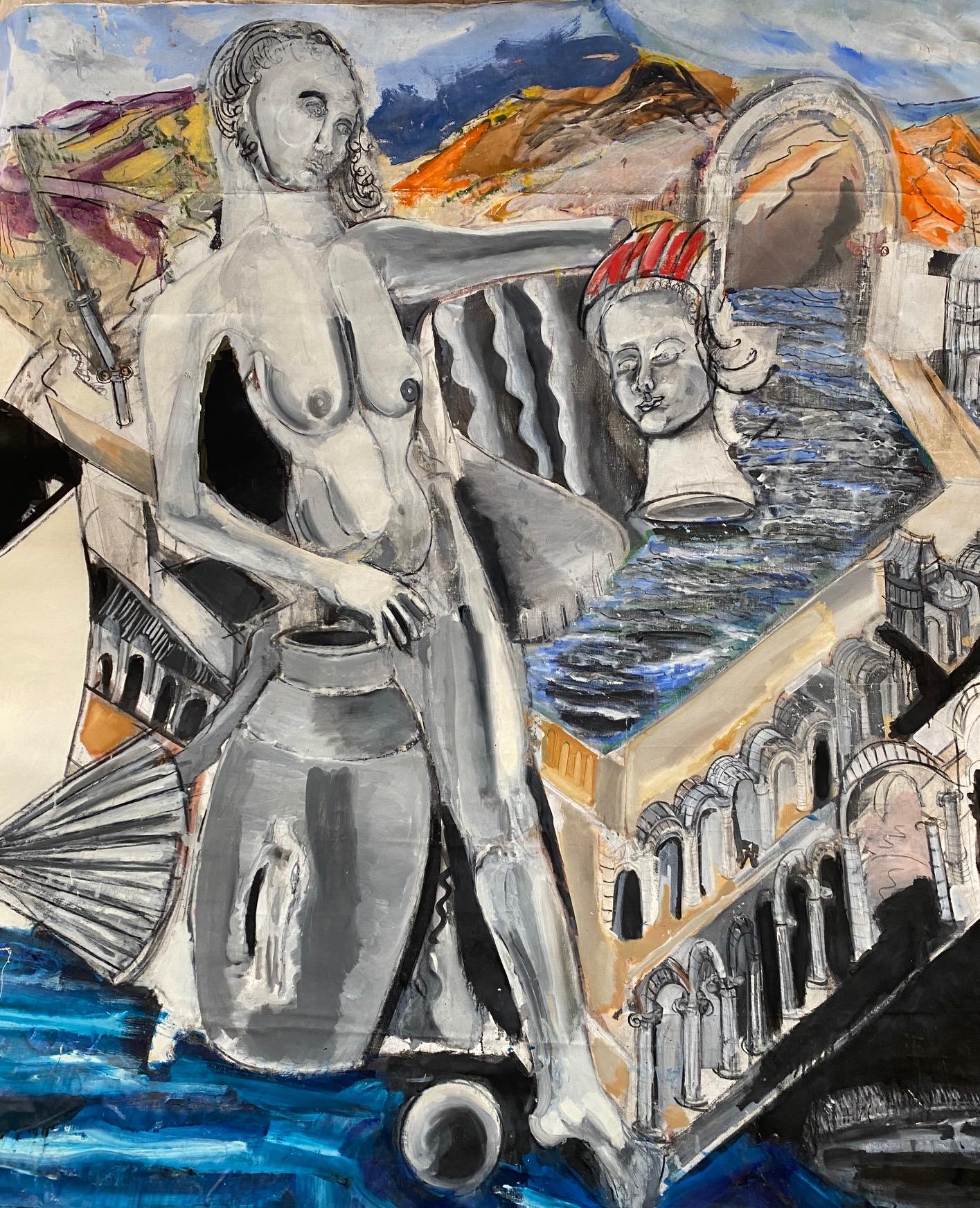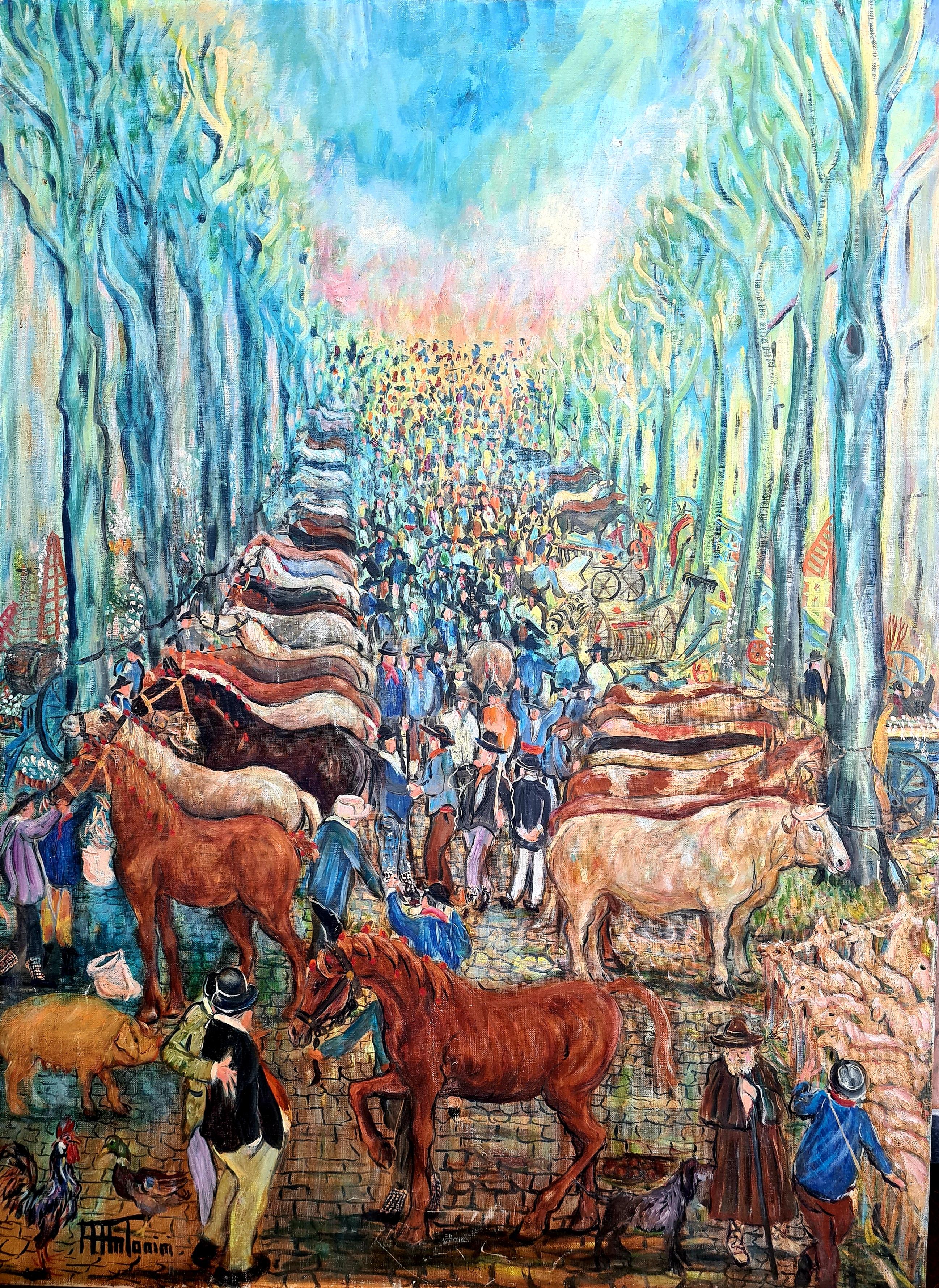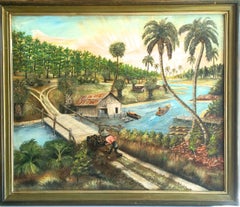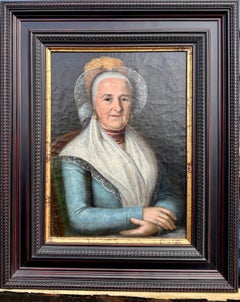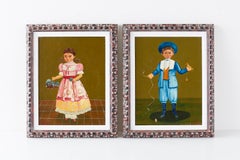
Boy and Girl Mexican Folk Art Paintings
1 of 23
Agapito LabiosBoy and Girl Mexican Folk Art Paintings
$2,000List Price
About the Item
- Creator:
- Dimensions:Height: 21 in (53.34 cm)Width: 17 in (43.18 cm)Depth: 2 in (5.08 cm)
- Medium:
- Movement & Style:
- Period:
- Condition:Good, minor wear consistent with age and use.
- Gallery Location:Rio Vista, CA
- Reference Number:1stDibs: LU131515380491
Authenticity Guarantee
In the unlikely event there’s an issue with an item’s authenticity, contact us within 1 year for a full refund. DetailsMoney-Back Guarantee
If your item is not as described, is damaged in transit, or does not arrive, contact us within 7 days for a full refund. Details24-Hour Cancellation
You have a 24-hour grace period in which to reconsider your purchase, with no questions asked.Vetted Professional Sellers
Our world-class sellers must adhere to strict standards for service and quality, maintaining the integrity of our listings.Price-Match Guarantee
If you find that a seller listed the same item for a lower price elsewhere, we’ll match it.Trusted Global Delivery
Our best-in-class carrier network provides specialized shipping options worldwide, including custom delivery.You May Also Like
"Simchat Torah in the Synagogue, " Leo Schutzman, Jewish Folk Art
By Leo Schutzman
Located in New York, NY
Leo Schutzman (1878 - 1962)
Simchat Torah in the Synagogue, circa 1958
Oil on canvas
40 x 36 inches
Signed lower left
Provenance:
The Contemporaries Gal...
Category
1950s Folk Art Figurative Paintings
Materials
Canvas, Oil
$8,000 Sale Price
20% Off
Mississippi River Landscape
By Saul Haymond
Located in Lake Worth Beach, FL
Landscape Mississippi River.
Saul Haymond, Sr. (1947- ) of Pickens, Mississippi is a self-taught painter who has been documenting life in the Africa...
Category
1960s Outsider Art Landscape Paintings
Materials
Oil, Canvas
$2,000 Sale Price
33% Off
"The Marriage Proposal (Family Gathering), " Leo Schutzman, Jewish Folk Art
By Leo Schutzman
Located in New York, NY
Leo Schutzman (1878 - 1962)
The Marriage Proposal, circa 1958
Oil on canvas
24 x 20 inches
Signed lower left
Leo (Kyle) Schutzman (1878-1962) developed ...
Category
1950s Folk Art Figurative Paintings
Materials
Canvas, Oil
19th century American Folk Art of a Seated Lady in her Sunday best clothes
Located in Woodbury, CT
Unknown Artist (American School, 19th century)
Portrait of a Lady in Blue, c. 1835–1850
Oil on canvas
This painting is unsigned
This quietly elegant portrait captures a mature woman...
Category
1850s Folk Art Portrait Paintings
Materials
Canvas, Oil
Whimsical French Folk Art, Naive, Oil Painting Madeline Marie Christine Clavier
By Madeline Christine Clavier
Located in Surfside, FL
MADELINE CHRISTINE CLAVIER (1913-2015)
Signature: Signed lower right & titled verso
Medium: Oil on canvas
Provenance: The collection of the artist's family
Marie Christine Clavier was born in Saigon, Vietnam in 1913 to French parents and lived there for her formative years. She returned to France as a teenager and began to study painting. Her work quickly developed into whimsical paintings of poetry and songs – harmonized in a unique and distinct painting technique. Her work has an impasto feel and a folk art, outsider artist sensibility to it. Similar in style to Maik and other fantasy realists who use animals, flowers and foliage in their artworks. Marie Clavier painted ro herself rather than for profit as she was quite independently wealthy. She exhibited extensively in the United States in the 1970s especially across Connecticut and New York, showing at various galleries and cultural centres. She had numerous solo exhibitions in the 1970’s- notably at the Maison Francaise in New York and New York University. She showed at Galerie Bernheim Jeune in Paris. She won many awards for her work including Gold Medals and Palme D’Or medals. In 1988 the prestigious art publisher Leopard D’Or produced catalogue book on her life and work – by this point she had virtually given up painting. She died in 2015 aged 102.
Bernheim-Jeune gallery is one of the oldest art galleries in Paris. Opened on Rue Laffitte in 1863 by Alexandre Bernheim (1839-1915), friend of Delacroix, Corot and Courbet, it changed location a few times before settling on Avenue Matignon. The gallery promoted realists, Barbizon school paintings and, in 1874, the first impressionist and later post-impressionist painters. It closed in 2019. In 1901, Alexandre Bernheim, with his sons, Josse (1870-1941), and Gaston (1870-1953), organized the first important exhibition of Vincent van Gogh paintings in Paris with the help of art critic Julien Leclercq. In 1906, Bernheim-Jeune frères started presenting works by Pierre Bonnard, Edouard Vuillard, Paul Cezanne, Henri-Edmond Cross, Kees van Dongen, Henri Matisse, Le Douanier Rousseau, Raoul Dufy, Maurice de Vlaminck, Amedeo Modigliani, Maurice Utrillo and Georges Dufrenoy. From 1906 to 1925, art critic Félix Fénéon was the director of the gallery and was instrumental in bringing in the art of Georges Seurat and Umberto Boccioni.
In 1922, an exhibition brought together works by Alice Halicka, Auguste Herbin, Pierre Hodé, Moise Kisling, Marie Laurencin, Henri Lebasque, Fernand Leger and Henri Matisse. The gallery now exhibits painters and sculptors in the tradition of the École de Paris and artists such as Jean Carzou, Shelomo Selinger or Pollès.
Her style is a recognizable, cheerful, whimsical and a happy creation. Naïve art is any form of visual art that is created by a person who lacks the formal education and training that a professional artist undergoes (in anatomy, art history, technique, perspective, ways of seeing). Unlike folk art, naïve art does not necessarily evince a distinct cultural context or tradition. Naïve art is recognized, and often imitated, for its childlike simplicity and frankness. Paintings of this kind typically have a flat rendering style with a rudimentary expression of perspective.
One particularly influential painter of "naïve art" was Henri Rousseau (1844–1910), a French Post-Impressionist who was discovered by Pablo Picasso. Naïve art is often seen as outsider art that is by someone without formal (or little) training or degree. While this was true before the twentieth century, there are now academies for naïve art. Naïve art is now a fully recognized art genre, represented in art galleries worldwide. Museums devoted to naïve art now exist in Kecskemét, Hungary; Riga, Latvia; Jaen, Spain; Rio de Janeiro, Brasil; Vicq France and Paris. Another term related to (but not completely synonymous with) naïve art is folk art. There also exist the terms "naïvism" and "primitivism" which are usually applied to professional painters working in the style of naïve art (like Paul Gauguin, Mikhail Larionov, Paul Klee). At all events, naive art can be regarded as having occupied an "official" position in the annals of twentieth-century art since - at the very latest - the publication of the Der Blaue Reiter, an almanac in 1912. Wassily Kandinsky and Franz Marc, who brought out the almanac, presented 6 reproductions of paintings by le Douanier' Rousseau (Henri Rousseau), comparing them with other pictorial examples. However, most experts agree that the year that naive art was "discovered" was 1885, when the painter Paul Signac became aware of the talents of Henri Rousseau and set about organizing exhibitions of his work in a number of prestigious galleries. The Earth Group (Grupa Zemlja) were Croatian artists, architects and intellectuals active in Zagreb from 1929 to 1935. The group included the painters Krsto Hegedušić, Edo Kovačević, Omer Mujadžić, Kamilo Ružička, Ivan Tabaković, and Oton Postružnik, the sculptors Antun Augustinčić, Frano Kršinić, and the architect Drago Ibler. A term applied to Yugoslav (Croatian) naive painters working in or around the village of Hlebine, near the Hungarian border, from about 1930. Some of the best known naive artists are Dragan Gaži, Ivan Generalić, Josip Generalić, Krsto Hegedušić, Mijo Kovačić, Ivan Lacković-Croata, Franjo Mraz, Ivan Večenaj and Mirko Virius. Camille Bombois (1883–1970) Ferdinand Cheval, known as 'le facteur Cheval' (1836–1924) Henry Darger (1892–1973) L. S. Lowry (1887–1976) Grandma Moses, Anna Mary Robertson...
Category
20th Century Folk Art Animal Paintings
Materials
Canvas, Oil
19th Century French Naive Portrait of Lady Large Oil Painting on Canvas
By Henri Rousseau
Located in Cirencester, Gloucestershire
Portrait of a Lady
French School, 19th century
circle of Henri Rousseau, French 1844 - 1910
oil on canvas, unframed
canvas: 24 x 23.5 inches
provenance: private collection, France
co...
Category
19th Century Folk Art Figurative Paintings
Materials
Oil, Canvas
Recently Viewed
View AllMore Ways To Browse
Blue Boy And Pink Girl Paintings
Arthur Fell
Assumption Of Mary
Bathing Cap Art
Christopher David White
Cicada Painting
Fremin Gallery
John Glover Painting
Las Meninas
Pasolini Poster
Paul Mccartney Drawing
Professional Wrestling
Rabbis Dancing
Ramon Santiago
Red Dress Mother Child Painting
Rene Jerome
Rene Romero
Sexy Woman Painting
